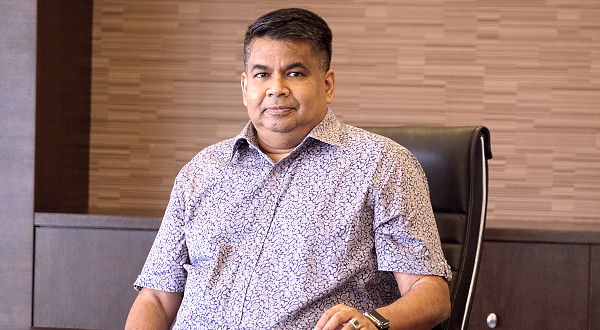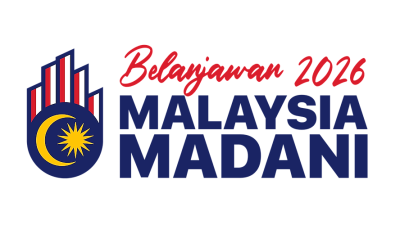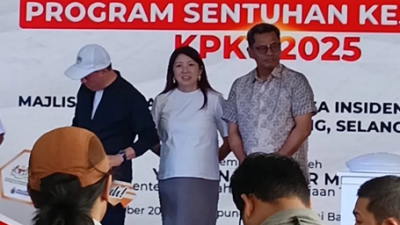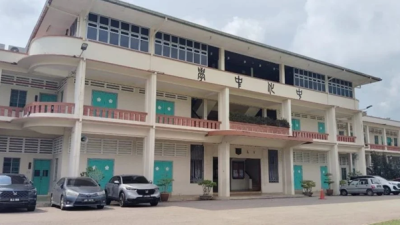
Malaysia’s newly-elected unity government has placed lowering the cost of living as one of its main priorities, which, among other things, implies the dire necessity to focus on urgently strengthening national food security.
After all, the food items have been topping the list eating up the monthly budget of the B60 category recently.
Aligning strategic framework with the global trends
Earlier EMIR Research has argued that a solid national food security strategic framework must be aligned with the global food security trends (Figure 2) that are discerned by examining the experience of countries leading global food security forefront (for more details, refer to 4IR Towards National Food Security: Alignment with National Agrofood policy 2.0).

In this article, in two parts, EMIR Research proposes an alternative radical, holistic and strategic framework for national food security, congruent with the global food security trends as an outcome of its continuous focus and research in food security since 2019.
The first part of the article (Reinventing Malaysian Food Security Framework—Part 1) spoke about the vision and mission and the first two goals (“uplifting the status of food security” and “paving the way towards self-sufficiency”) under the proposed framework. This part focuses on the other two goals underpinning the framework.
Goal 3 — Vibrant ecosystem around food security
Just like other countries leading global food security, Malaysia must set a goal of building vibrant and healthy ecosystems around the agricultural sector infused with tech, including producers, financiers, policymakers, educators, and even consumers with the following objectives (Figure 2).

Objective 1: Provide various financing options focusing on start-ups and MSME segments and technology adoption within the agriculture industry: Malaysia’s sovereign wealth funds (Khazanah and Employees Provident Fund), innovative smart financing or viable commercial banking sector options.
The belief that smallholder farming cannot be efficient is an old conventional way of thinking.
Modern elegant 4IR tech solutions allow efficiency at every level, scale, and cross-industry. Malaysia Digital Economy Corporation (MDEC) has a proven concept in the agri sector, achieving remarkable success in empowering smallholder farmers in a local setting that demands to be replicated and scaled nationwide (for details about this initiative, read 4IR enabled farmers: Solving national food security).
MDEC experience indicates that AgriTech is capital intensive, but it quickly, safely and handsomely pays off – a far better way to grow people’s money in the custody of Khazanah, Employees Provident Fund and their likes than placing it in government bonds and crony investments.
Objective 2: Ensure land availability for agricultural activities: limit land ownership while introducing a rent ceiling and permanent rental contracts for small farmers.
Malaysia could modify Taiwan’s “Land-to-the-Tiller” program to limit land ownership. The government could buy back the surplus land by compensating big landowners who owned large parcels of land, thus providing a higher chance for smallholder farmers to obtain government-owned land.
To ensure affordability, the government also could determine the rent ceiling for the allotted land and consider promoting permanent land rental contracts for smallholder farmers in place of the requirement to obtain a Temporary Occupation License (TOL) – a form of land license that has to be renewed at least every three years (per the latest policy introduced by the Ismail Sabri administration).
Objective 3: Facilitate contract farming and Farming as a Service (can be done through a single national supply chain management data platform).
Contract farming, i.e., directly between the farmer and manufacturer or retailer (without the intermediation of the middlemen) – of which the PPK of Kuala Langat is an eminent example (Agri-Tech Malaysia – Onward And Upward), would improve the efficiency of the supply chain and increase farmers’ income and profit. It’s, therefore, superior to government subsidies.
Objective 4: Intensify community farming practices.
Objective 5: Build AgriTech Valley/City as an AgriTech innovation cluster/hub to provide a nurturing business ecosystem and engender local and international collaboration for research and development of advanced scientific food security systems with a specific focus on indoor/urban farming.
The idea is to build an integrated city as a complete biotope to try and showcase smart innovative solutions for the energy-food-water nexus.
In other words, the city is intended to act as a hub and an incubator for researchers, entrepreneurs, start-ups and industry experts, providing the facilities and amenities they need to develop innovative solutions in the food industry.
The hub will also seek collaboration with the nations already leading food security innovation, such as Singapore, South Korea, China and UAE and other regional peers, such as Thailand and Indonesia.
Malaysia can consider establishing one or two of such AgriTech cities/hubs in the states of Johor and Perak, as both have sizable waqf land currently being unutilized. Moreover, the site in the state of Johor is also compelling as a strategic location between Singapore and Nusantara (the new capital city of Indonesia).
Objective 6: Set the universities that have land as national flagship universities to spearhead research and collaboration focusing on AgriTech, circular economy and regenerative agriculture principles.
There is a dire need to shift the focus of research institutes (MARDI, etc.), National Universities (UITM, UPM, IIUM etc.) and private universities (Sunway, UCSI and UTAR etc.) to provide dedicated research on food security, focusing on technology/biotechnology/methodology support.
Objective 7: For the AgriFood flagship universities, align key performance indicators with the number of research that reaches the commercial stage.
Aligned with an increased funding intensity for agricultural research spending, staff recruitment and training, alongside incentives, the set of key performance indicators should be extended beyond the number of peer-reviewed publications by government and higher education agricultural research agencies to include the scale-up and commercialization stages.
Objective 8: Encourage food production closer to the places of consumption through complete control of environment farming and urban farming.
The objective is to encourage the proliferation and utilization of urban spaces or to build special purpose facilities for vertical complete control environment farming close to big shopping malls, airports, hotels, universities and schools to minimize transportation costs and increase freshness (and, therefore, the nutritional value) of the agricultural produce.
Objective 9: Provide critical infrastructure and services for moving food from farm to market.
Basic infrastructure such as paved roads must be made available from farms, plantations, animal husbandries, fisheries and aquaculture to market or key points of aggregation/distribution nodes, especially those that are categorized under critical self-sufficiency (CSS) supply chains.
The current absence of such an infrastructure often puts smallholder farms at the mercy of the middleman. Therefore, there is a need for a model that ensures consistent and guaranteed off-take from the farms and provides direct, reliable, and transparent payment to the farmer.
The experience of PPK Kuala Langat with their centralized “Pusat Pungutan Hasil Pertanian” (PPHP) model should be studied and scaled.
Goal 4 — Energy-food-water nexus
According to the Food and Agriculture Organisation of the United Nations, water and energy security are also linked to food security.
Without water and energy, farmers cannot proceed with food production. And it is time for Malaysia to recognize the energy-food-water nexus as being critical to the success of the national food security strategy.
The following objectives are suggested to propel the movement in this strategic direction (Figure 3).

Objective 1: Designate water and water resources to be protected under National Security.
The protection of water and water resources, legally and physically, must go hand in hand with robust environmental protection laws to enforce the management of waste/effluents/byproducts alongside the application and enforcement of a circular economy across all sectors.
Objective 2: Allocate dedicated and guaranteed energy (renewable and non-renewable) and water supply for CSS-designated supply chains.
Dedicate water and electricity supply, with special provisions in times of crises:
- CSS-designated food production units (farms, plantations, animal husbandry, fisheries and aquaculture) and its supply chains must be guaranteed water/energy supply infrastructures, be it from water/energy supply companies, state or self-sponsored means of pumping consistent amounts of clean water/energy to the food production units.
- CSS-designated food production units (farms, plantations, animal husbandry, fisheries and aquaculture) and its supply chains must be legally guaranteed water (volume and cleanliness) and electricity supply in terms of sufficient infrastructure. In times of crises, water and electricity must be supplied at minimal or no cost.
Objective 3: Renewable energy (dedicated or in combination) and clean water supply for rural areas used for food production.
As for energy, CSS-designated food production units should ideally be supported by a combination of energy supply infrastructures, that is, from both power supply companies and state/self-sponsored means of generating electricity locally at the food production units, such as the use of solar, hydroelectric, biofuels etc. which is a particularly relevant strategy for rural areas.
Objective 4: Manage water-energy-food interdependencies, possible trade-offs and synergies during food production, processing, preservation and transportation.
The use of the 4IR-powered system takes into account all the utilities (water, electricity) and consumables (feed, fertilizers) for food production and supply chain management (sensors, AI, automation) for resource optimization, cost reduction, and yield maximization.
Objective 5: Extend standards to incentivize the green building index to include the energy-food-water dimension aligned with new incentives and new tax structures supportive of development budget growth.
Introduce and enforce new standards through agencies such Construction Industry Development Board (CIDB), either standalone or in addition to existing standards such as Green Building Index or GreenRE, to go beyond energy and water efficiency for food production initiatives which extends to water reuse, recycling, and capture, and alternative energy and natural lighting, and food production such as indoor farming, vertical farming, hydroponics etc.
Our nation, at this critical junction, has no more room for “maneuvering” reactive response (as a substitute for a solid food security framework) such as the abolishment of the Approved Permits (APs), fixed price ceiling, higher price ceiling, endless subsidiaries, export ban, a partial export ban that do not address the problem and at a time even aggravate the situation more than ease it.
Read:
Reinventing Malaysian food security framework—Part 1
(Dr. Rais Hussin is the President and Chief Executive Officer of EMIR Research, a think tank focused on strategic policy recommendations based on rigorous research.)
ADVERTISEMENT
ADVERTISEMENT






































